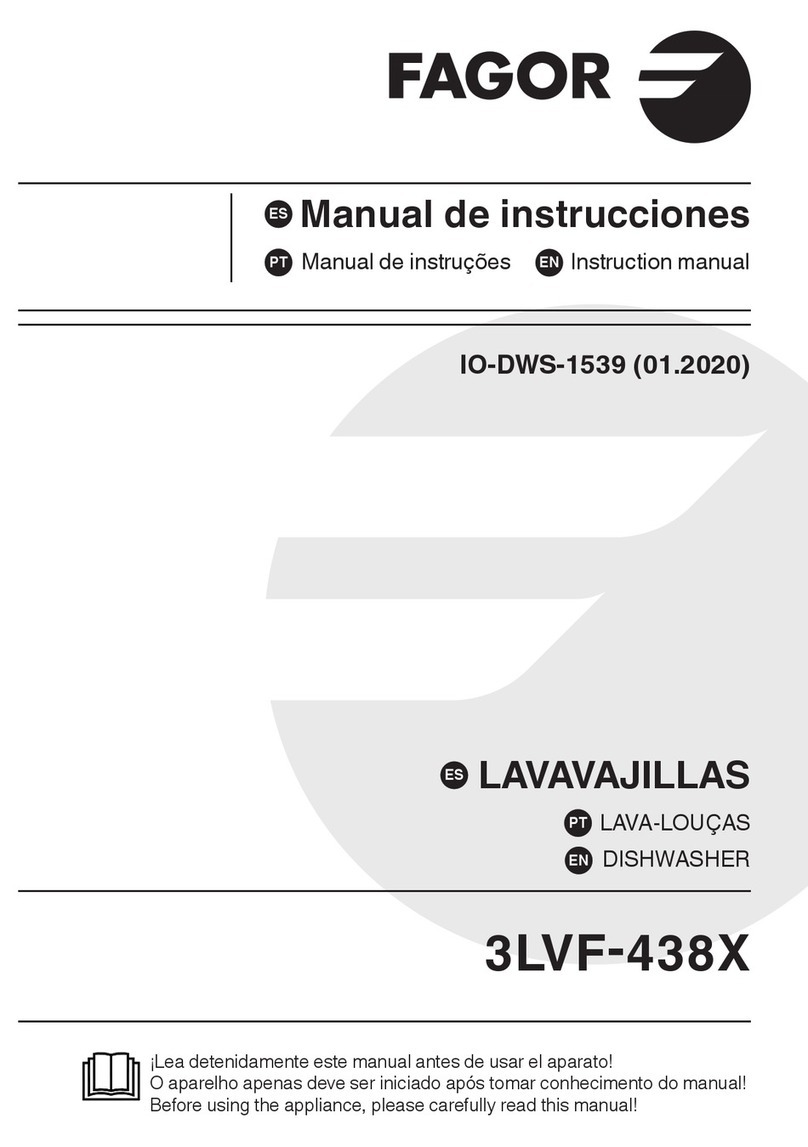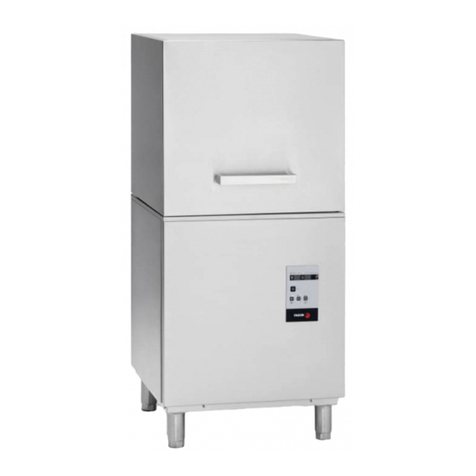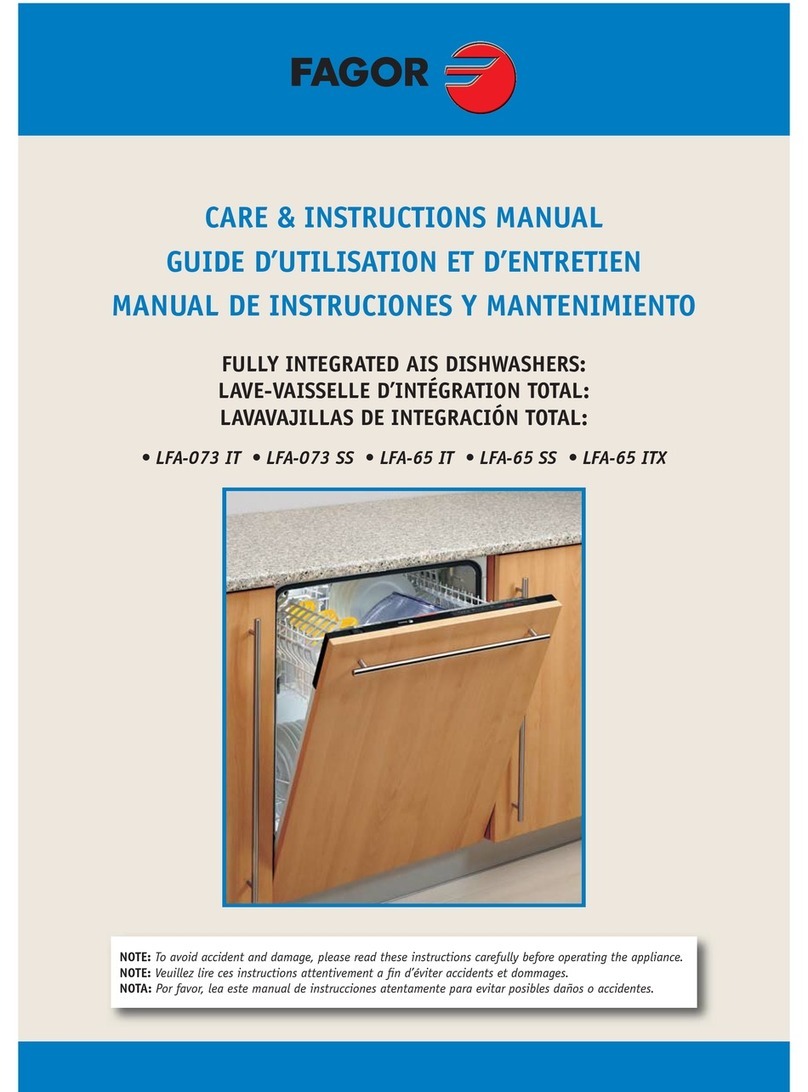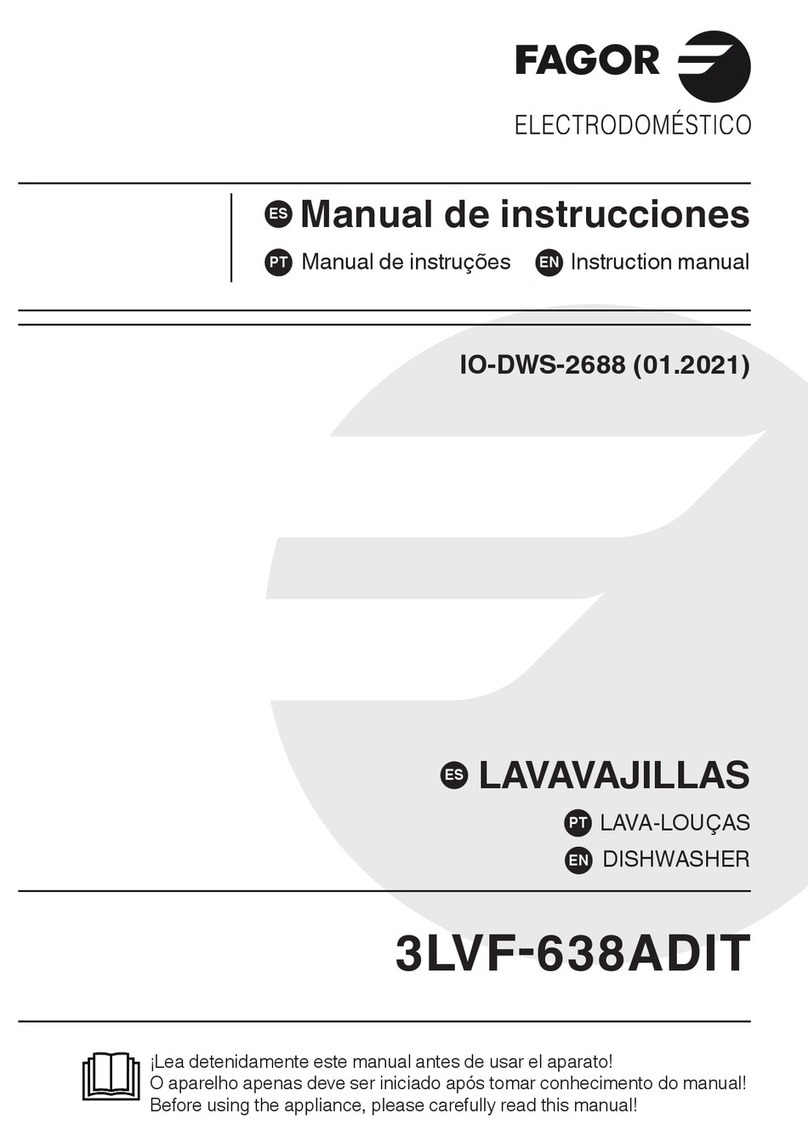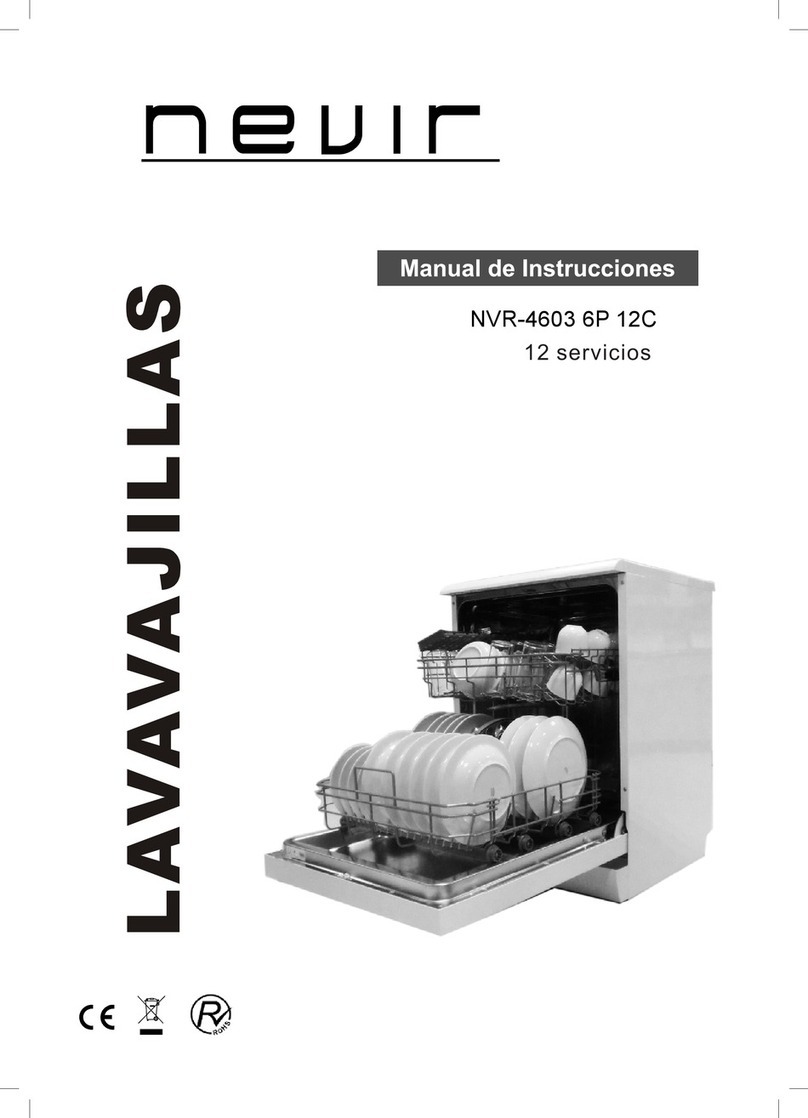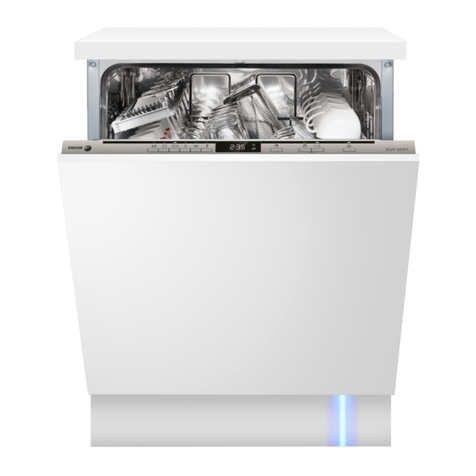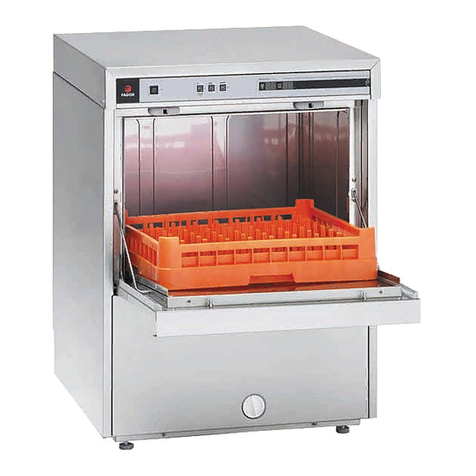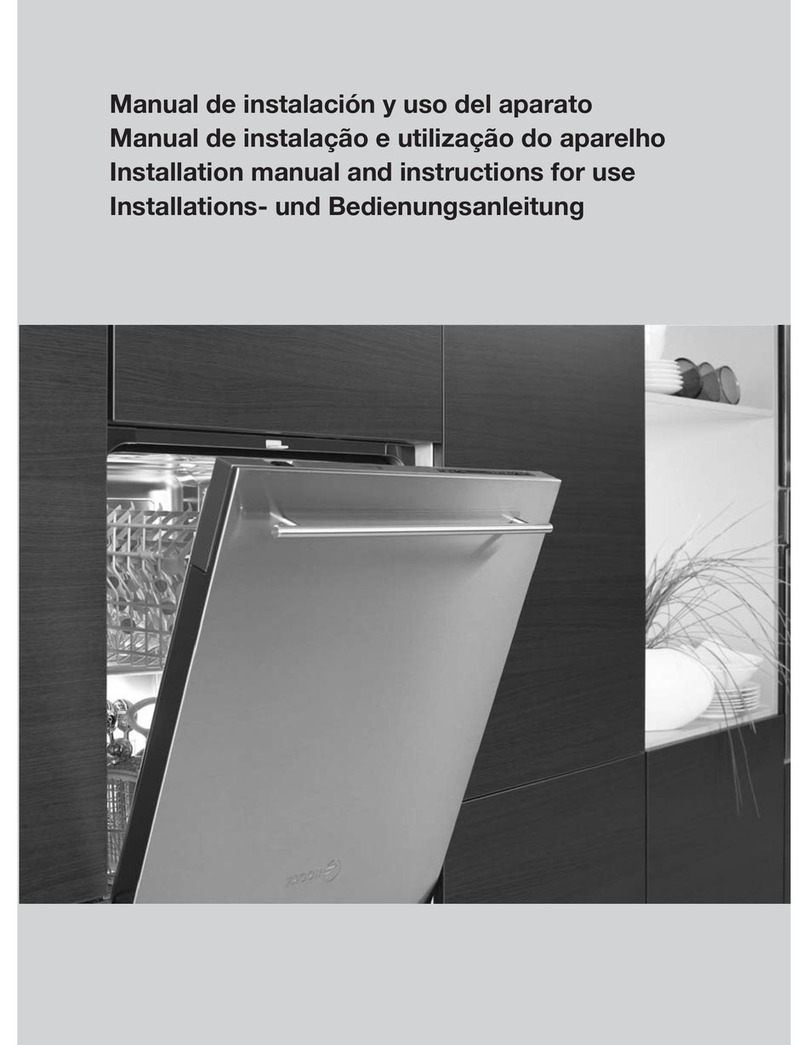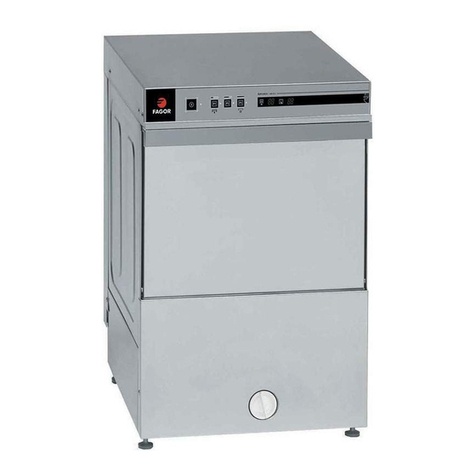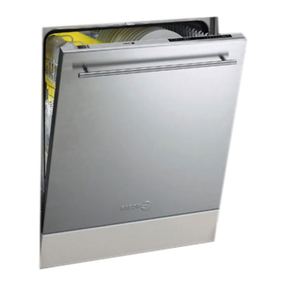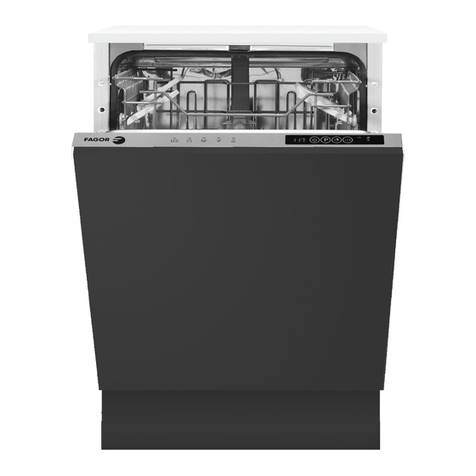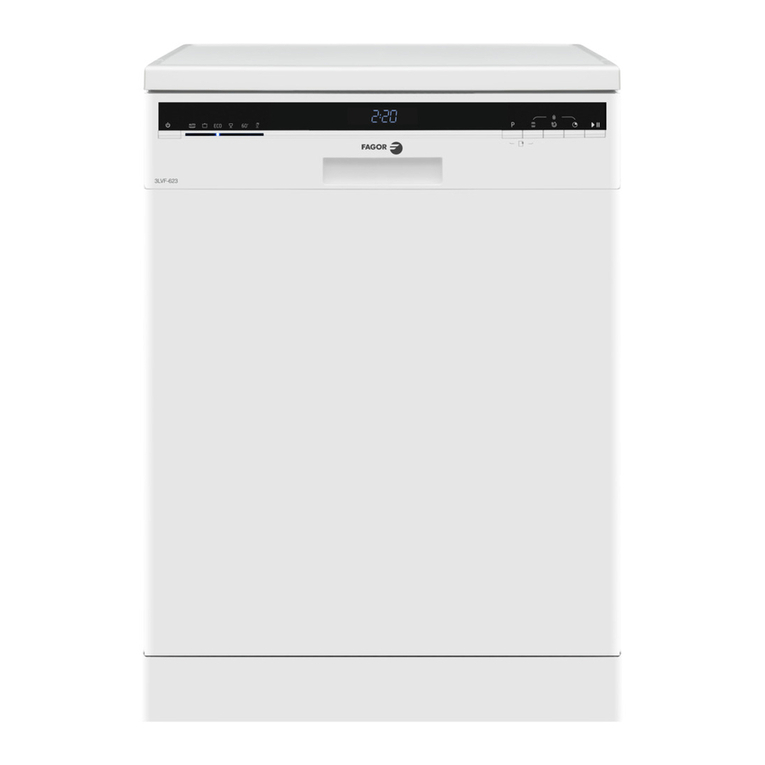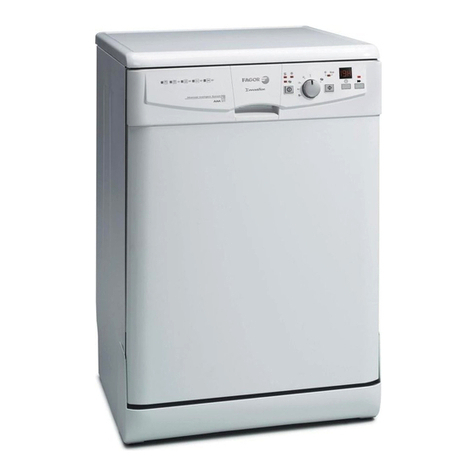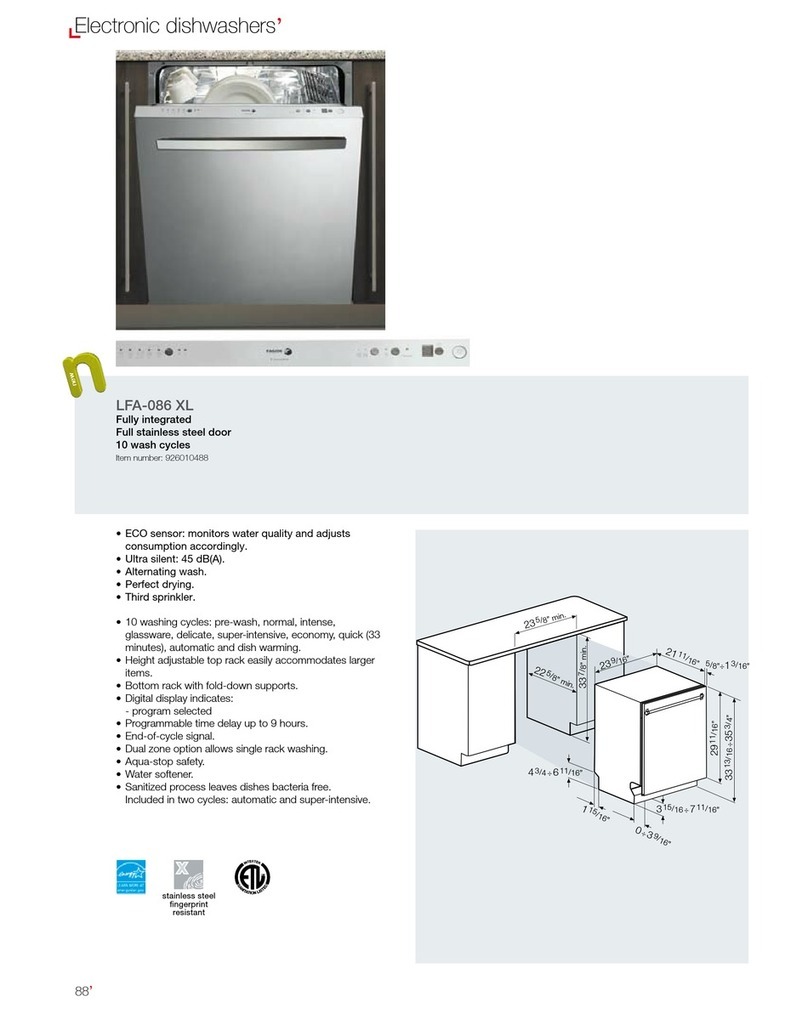
22/07/2019
3
SERVICE MANUAL
EVO FRONT LOADING DISHWASHER
9.6.22.ADVANCE SAT MENU....................................................................................................................................57
10. TROUBLESHOOTING ....................................................................................................................................................... 58
11. CONCEPT & CONCEPT PLUS ALARMS .............................................................................................................................. 60
12. ADVANCE MODEL ALARMS............................................................................................................................................. 60
13. COMPONENTS ................................................................................................................................................................ 61
13.1. ELECTRONIC CONTROL CARDS, VIEWERS, PROGRAMMERS, REGENERATION PROGRAMMERS,
ELECTRONIC REGENERATION CARD AND BACKLIGHT.........................................................................................................61
13.1.1.PROGRAMMER CYCLE 12092150 (CO-500 and CO-501)...............................................................................63
13.1.2.ELECTRONIC CONTROL CARD 12189021 (CO-500 and COP-501) .................................................................69
13.1.3.ELECTRONIC CONTROL CARD 12008750 (CO-502, CO-502 W, COP-503, COP-504 and COP-504 W)...........76
13.1.4.VIEWER 12024028 (CO-502 and COP-504) ................................................................................................... 83
13.1.5.VIEWER 12010417 (CO-502 W and COP-504 W) .......................................................................................... 87
13.1.6.ELECTRONIC CONTROL CARD 12048024 (AD-505) ....................................................................................... 90
13.1.7.VIEWER 12048027 (AD-505) ........................................................................................................................ 94
13.1.8.ELECTRONIC REGENERATION CARD 12120189 (AD-505) ............................................................................. 97
13.1.9.BACKLIGHT 12097036 (AD-505)..................................................................................................................100
13.2. TEMPERATURE PROBE 12025036 (CO-502, CO-502 W, COP-144, COP-504 W and AD-505) ...................103
13.3. RESISTOR ..................................................................................................................................................104
13.3.1.TANK RESISTANCE 230 V 2,8 kW 324 mm SIMPLE UL 12048965 (CO-500, CO-501, CO-502, CO-502 W, COP-
503, COP-504 and COP-504 W)).............................................................................................................................105
13.3.2.TANK RESISTANCE 230 V 0.8 kW 135 mm SIMPLE UL 12046952 (AD-505 EVO 1.0)...................................106
13.3.3.TANK RESISTANCE 230 V 2,8 kW 325 mm SIMPLE UL 12159451 (CO-500, CO-501, CO-502 and COP-504)107
13.3.4.TANK RESISTANCE 230 V 1 kW 145 mm SIMPLE UL ROH 12212410 (AD-505 EVO 2.0) .............................108
13.3.5.BOILER RESISTANCE 230 V 5,6 kW 430 mm TRIPLE UL 12098745 (CO-501, CO-502 and CO-502 W)......... 109
13.3.6.BOILER RESISTANCE 230 V 5,6 kW 305 mm TRIPLE UL 12090551 (COP-503, COP-504, COP-504 W and AD-
505) 110
13.3.7.BOILER RESISTANCE 230 V 2,8 kW 430 mm SIMPLE UL 12098741 (CO-500)..............................................111
13.4. MOTOR PUMPS ........................................................................................................................................112
13.4.1.WASH MOTOR PUMP 230 V AC 1N 50 Hz 590 W 12043287 (EVO 1.0 only) (CO-500, CO-501, CO-502, CO-
502 W, COP-503, COP-504, COP-504 W and AD-505)............................................................................................ 113
13.4.2.WASH MOTOR PUMP 220 V AC 1N 60 Hz 590 W12102834 (CO-502 W and COP-504 W) .........................114
13.4.3.RINSE MOTOR PUMP 230 V AC 1N 50/60 Hz 12024233 (CO-502 W, COP-503, COP-504, COP-504 W and
AD-505) ..................................................................................................................................................................115
13.4.4.RINSE MOTOR PUMP 50 Hz UP60-UP30-100651431 12187518 (only EVO 2.0) (COP-504 and AD-505)....116
13.4.5.DRAINAGE MOTOR PUMP 220 V AC 50/60 Hz 37 kW 12094265 (CO-500, CO-501, CO-502, CO-502 W, COP-
503, COP-504, COP-504 W and AD-505) ................................................................................................................ 117
